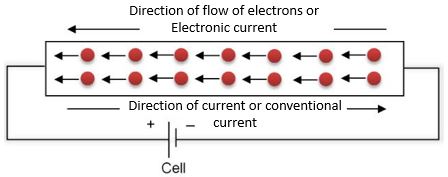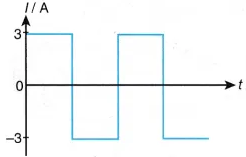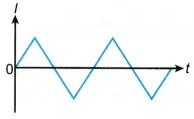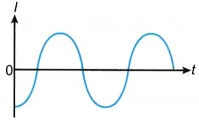The amount of charge flowing through any cross-section of a substance in a unit time is called Electric current. It can also be defined as the rate of flow of charge through any cross-section of a substance.
If the electric current does not change with time, then
electric current, i = q/t
where q = total charge flowing
t = time taken
If the rate of flow of charge varies with respect to time, the current is said to be varying. In such a case, we define instantaneous current, i(t) by the equation

The S.I. unit of electric current is ampere (A).
Define 1 Ampere.
Current through a conductor is said to be one ampere if one-coulomb charge flows through any cross-section of the conductor in one second.
Direction of Electric current
The direction opposite to the flow of electrons gives the direction of electric current. This current is called conventional current. In other words, we can say that the direction of flow of positive charge gives the direction of electric current or conventional current. The direction of flow of electrons gives the direction of natural current or electronic current.
The electronic current is opposite to the conventional current.

Note: In the network theory, while developing KVL and KCL equations, conventional current is used.
Note: Electric current is a scalar quantity even though it has magnitude and direction because it does not obey vector laws. So simple laws of algebra are used to find net electric current.
Types of Electric Current
Electric Currents or simply current can be classified as
1. Direct or steady current
2. Varying direct current
3. Alternating current
4. Transient current
1. Direct or steady current
A current whose magnitude and direction (or polarity) of current do not change with time is known as Direct or steady current. For such type of current, a graph between current and time is always a straight line parallel to time axis as shown in the figure below.

2. Varying direct current
A current whose magnitude changes with time but the direction (or polarity) remains the same is known as Varying direct current. The following figures show the example of varying direct current.



3. Alternating current
A current whose magnitude, as well as direction (or polarity) changes with time, is known as alternating current. The following figures show the example of alternating current.



4. Transient current
The currents which flow for a very short interval of time are known as transient currents. The following figures show the example of the transient current.


You have provided very nice information, I got more information from this electric current post, thanks for this type of article.